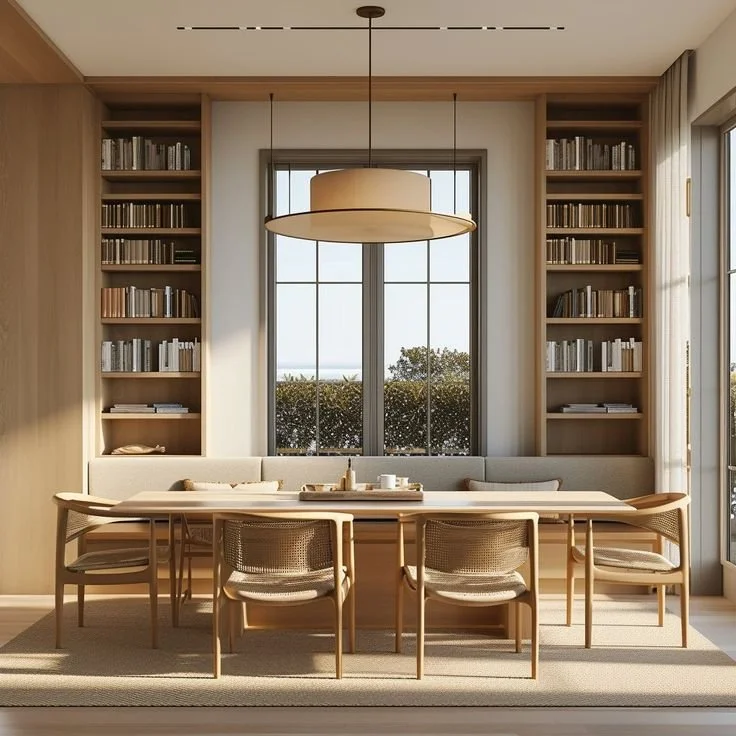Designing with Purpose: How to Create Beautiful, Multifunctional Spaces
In today’s ever-evolving world, our homes have become more than just places to rest—they are offices, classrooms, yoga studios, creative retreats, and social hubs. The demand for multifunctional spaces has surged, particularly in urban and suburban settings where square footage is at a premium. But functionality doesn’t have to come at the cost of beauty. In fact, the most inspiring spaces today are those that blend form and function effortlessly.
Why Multifunctional Design Matters
The modern home needs to flex with our lives. A kitchen table doubles as a Zoom desk. A guest room transforms into a meditation zone. Thoughtful, multifunctional design is no longer a luxury—it's a necessity. And when done right, it elevates how we live, work, and connect with our surroundings.
Whether you're living in a city loft or a Sonoma farmhouse, designing with intention can create spaces that serve multiple purposes without feeling compromised.
1. Start with a Clear Vision (and Real Priorities)
Begin by asking: What do I need this space to do for me? Think about your daily routines and pain points. Do you need a spot for focused work? A cozy nook for reading? A hidden bar for entertaining?
Once your goals are clear, we can layer in beauty and comfort without sacrificing practicality.
2. Smart Furniture = Smart Living
Look for pieces that offer versatility:
Console tables that expand into dining tables
Ottomans with hidden storage
Built-in benches that double as reading nooks
Murphy beds or custom wall systems in guest rooms or offices
High-end doesn’t have to mean bulky. Custom millwork can be both elegant and ingenious, allowing a room to transform at a moment’s notice.
3. Zoning with Design Elements
Multifunctional doesn’t mean chaotic. Use subtle design cues to define different areas:
Rugs to ground a workspace within a larger room
Lighting to set mood and function (e.g., task lighting for desks, sconces for ambient reading)
Color shifts or paneling to distinguish “zones” without adding physical barriers
Glass partitions, curtains, or even stylish folding screens can carve out space while maintaining light and openness.
4. Don’t Skimp on Aesthetics
One of the most common concerns clients share is that multifunctional rooms feel utilitarian or mismatched. That doesn’t have to be the case. When we design, we ensure every piece fits within the larger aesthetic vision—whether that's minimalist modern, layered European, or California cool.
Materials, textures, and tones should be cohesive across functions, so nothing feels out of place—even if your office is tucked behind a sliding panel in the living room.
5. Invest Where It Matters
A multifunctional home is an investment in your lifestyle. Sometimes that means choosing custom cabinetry that hides tech equipment or investing in soundproofing a shared space so you can Zoom while the kids nap. Thoughtful design pays dividends in how relaxed, productive, and inspired you feel in your home every day.
Inspiration
Transforming a rarely used formal dining room into a dual-purpose library and intimate dinner space. Custom shelving lines the walls and frames the window, a statement pendant lights the center, a modular table expands when guests arrive, and custom-built seating offers ample room for business meetings or family gatherings. During the day, it's a serene reading and working area. By night, it's the perfect spot for candlelit dinners. Seamless. Elegant. Practical.
Source: Pinterest
In Conclusion
Multifunctional design is not about doing more with less—it’s about doing more with purpose. The best homes today are not defined by how many rooms they have, but by how thoughtfully they’re used.
If you’re ready to reimagine your space and make every square foot work harder and look better, let’s talk. I specialize in high-end interiors that reflect both who you are and how you live—beautifully.




